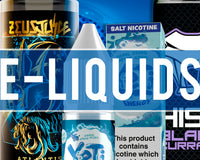The Rise of Nicotine Pouches
Nicotine pouches offer a tobacco-free alternative for nicotine delivery, increasing in popularity due to their convenience and perceived lower risk compared to smoking and dipping. The best nicotine pouches can be found on many different websites. However, they still pose significant health risks, particularly related to nicotine addiction and its associated health impacts. Regulation in the UK ensures some safety standards, but users should be aware of the potential oral and general health effects. Consulting healthcare professionals for guidance on quitting nicotine is advisable, as they can provide safer and more effective methods. Below we take a look at Nicotine Pouches and their positive and negative aspects.

Nicotine
- Source: The nicotine in pouches is typically derived from tobacco plants, though the final product does not contain any tobacco leaf. This is a key distinction as it separates the delivery method of nicotine from the traditional means, such as smoking or chewing tobacco.
- Absorption: Nicotine in these pouches is designed for oral absorption. When placed between the gum and lip, the nicotine is absorbed through the mucous membranes in the mouth, providing a similar nicotine "hit" to that of smoking or chewing tobacco, but without the need for inhalation or spitting.
Other Ingredients
- Fillers: These are substances added to create the bulk of the pouch and provide a consistent texture. Common fillers might include plant fibers or other food-grade materials.
- Flavorings: To make the experience more palatable, nicotine pouches often come in a variety of flavors such as mint, fruit, coffee, or other popular tastes. These flavors can help mask the natural bitterness of nicotine.
- pH Adjusters: The pH level in the pouch is adjusted to optimize the absorption of nicotine through the lining of the mouth. Typically, alkaline substances are used to raise the pH, as higher pH levels enhance nicotine absorption.
Usage
- Placement: The pouch is discreetly placed between the gum and upper lip. Users can continue with their activities without the need to remove it frequently, making it a convenient option compared to smoking or using traditional chewing tobacco.
- Duration: A nicotine pouch is usually kept in place for about 20 to 60 minutes, depending on the user's preference and the specific product instructions.
- Disposal: After use, the pouch is disposed of in a waste receptacle. Unlike smoking, there is no ash or cigarette butts, and unlike dipping tobacco, there is no need for a spit container.
Convenience and Discretion
- Odorless: Nicotine pouches do not produce smoke or a strong smell, making them more socially acceptable in public places where smoking is banned.
- No Staining: Unlike smokeless tobacco, which can stain teeth and require spitting, nicotine pouches are designed to minimize these issues, offering a cleaner user experience.
Legality in the UK
- Regulation: In the UK, nicotine pouches are regulated under the General Product Safety Regulations (GPSR) 2005. They must adhere to safety standards but do not fall under the strict regulations that govern tobacco products.
- Sales and Marketing: They can be sold to individuals over the age of 18. Advertising and marketing must comply with guidelines to avoid promoting use among non-smokers and minors.
Patterns of Use
- Demographics: Nicotine pouches are popular among both former smokers looking for a less harmful alternative and individuals who never smoked but are seeking nicotine.
- Usage Settings: Preferred for their discretion and convenience, they can be used in places where smoking is banned, such as workplaces, public transport, and indoor public spaces.
- Frequency: Users may consume multiple pouches a day, similar to how some might smoke several cigarettes or use chewing tobacco.
Marketed as a Safer Alternative
Due to the absence of tobacco leaf these are marketed as a safer alternative to traditional cigarettes.
- Harmful Chemicals in Tobacco: Traditional tobacco products, like cigarettes and smokeless tobacco (dipping), contain tobacco leaf, which harbors a wide array of harmful chemicals. These include tar, carbon monoxide, heavy metals (like lead and cadmium), and numerous carcinogens (such as benzene and formaldehyde).
- Reduction in Harmful Exposure: By not containing tobacco leaf, nicotine pouches eliminate exposure to many of these harmful substances. This is a significant point in their marketing, as it suggests a reduction in the health risks typically associated with tobacco use, such as lung cancer, oral cancer, respiratory diseases, and heart disease.
Comparisons with Traditional Products
Smoking
- Inhalation of Smoke: Cigarette smoking involves inhaling smoke, which contains thousands of harmful chemicals, many of which are carcinogenic and cause respiratory and cardiovascular diseases.
- Second-hand Smoke: Smoking also poses risks to others through second-hand smoke, which can lead to respiratory issues, heart disease, and cancer in non-smokers.
Smokeless Tobacco (Dipping)
- Oral Health Risks: Dipping involves placing tobacco in the mouth and leads to exposure to high levels of nicotine and other harmful chemicals. This can cause oral cancers, gum disease, and tooth loss.
- Addiction and Nicotine Absorption: The nicotine from smokeless tobacco is absorbed through the lining of the mouth, leading to rapid addiction and sustained high levels of nicotine in the bloodstream.
Nicotine Delivery and the Dangers
- Addictive Nature of Nicotine: Despite the absence of tobacco leaf, nicotine pouches still deliver nicotine, the primary addictive component of tobacco. Nicotine addiction can lead to dependency, making it difficult for users to quit once they start using these products.
-
Health Impacts of Nicotine: Nicotine itself is not without health risks. It can:
- Cardiovascular System: Increase heart rate and blood pressure, potentially leading to heart disease over time.
- Brain Development: Affect brain development, particularly in adolescents and young adults, potentially leading to cognitive and behavioral issues.
- Metabolism: Influence metabolic processes, potentially contributing to insulin resistance and an increased risk of type 2 diabetes.
- Pregnancy: Pose significant risks during pregnancy, including preterm birth, low birth weight, and developmental issues in the fetus.
- Oral health effects: Oral health may also be affected by the use of pouches. A recent article in the British Dental Journal highlights the potential harm caused.
Conclusion
Nicotine pouches offer a tobacco-free alternative for nicotine delivery, increasing in popularity due to their convenience and perceived lower risk compared to smoking and dipping. However, they still pose significant health risks, particularly related to nicotine addiction and its associated health impacts. Regulation in the UK ensures some safety standards, but users should be aware of the potential oral and general health effects. Consulting healthcare professionals for guidance on quitting nicotine is advisable, as they can provide safer and more effective methods.




